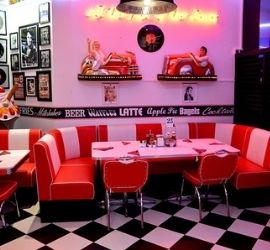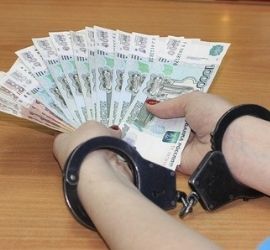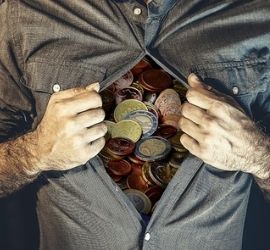What Is FF&E – Furniture, Fixtures, and Equipment?

FF&E is an acronym for furniture, fixtures, and equipment. It refers to movable furniture, fixtures, or other equipment that have no permanent connection to the structure of a building. These items include desks, chairs, computers, electronic equipment, tables, bookcases, and partitions. FF&E items typically depreciate substantially over their long-term use. But, they are nevertheless important costs to consider when valuing a company. These items are sometimes referred to as FF&A which stands for furniture, fixtures, and accessories.
Often, FF&E assets are contained inside a commercial building. They are not part of the building itself and are not permanently attached. Nevertheless, they have tangible value and are used in the day-to-day operations of a business that occupies the building. Office furniture is a common example. FF&E is an important concept to understand in real estate. When buying or selling an existing business, the fixtures, furniture, and equipment are important components of the business’s value. The same concept also applies in cases of bankruptcy sales or business liquidations.
FF&E Explained
An asset is listed as FF&E if it’s used by a business for normal daily operations. For example, an office receptionist relies on his or her desk located in the building’s lobby. Office workers rely on their chairs, telephones, and computers to conduct routine activities throughout the normal course of doing business.
Accountants categorize FF&E as tangible assets. They are listed under separate line items on financial statements and other budgeting documents. The FF&E balance is then added into a project’s total costs to determine if an initiative comes in over or under budget. In real estate financial analysis, FF&E is most often found as a line item in budgets and operating statements.
- Not attached – Are easy to remove from the building.
- Long-term assets – Have a useful life of one year or more.
- Not inventory – They are not products that a business would typically sell.
Why is FF&E important?
Business owners and commercial property landlords need to understand FF&E. It is especially important for accounting and tax purposes. Items listed as FF&E have depreciation calculated in a different way than the property itself. How this is handled on the balance sheet has a direct impact on a business’s book value.
For example, the IRS considers computing equipment to have a useful lifespan of five years while an office building that houses the computers would be depreciated according to a 39-year schedule. FF&E deductions can help boost your qualified business expense each year, in turn lowering your income tax. So, let’s say you buy a $1,000 computer for business use. Assuming you use straight-line depreciation for this expense, you could get a $200 depreciation expense deduction on your tax return each year for five years. Similar depreciation deductions can be obtained for the rest of your FF&E. (Source: fool.com)
Every building has some degree of value and cost related to equipment, furniture, and fixtures. These assets need to be considered when calculating the total cost of construction.
Whether it’s new building construction or expanding an existing business with added construction, everything that goes inside of it – FFE, is a major expense. If it’s not taken into account by the owner as a part of the total construction, it can turn into a huge problem with unexpected costs. Furniture, fixtures, and equipment (FF&E) are an important consideration for businesses, and in particular for the hospitality, retail, and medical industries. FF&E product displays for retail businesses, computer and office furniture for hotels, and all kinds of equipment, including computer and technical, for medical facilities need to be considered. (Source: beltmanlogistics.com)
Examples of FF&E
There is a wide range of items that could be included on a business’s balance sheet. It is not possible to list everything. However, here are some of the most common examples:
- Furniture: Tables, chairs, lamps, bookcases, sofas, and more.
- Electronic equipment: Computers are a very common example, as is stereo equipment, point-of-sale (POS) terminals, speakers, and other electronics. Security systems are often considered to be FF&E as well.
- Decorative items: Art, photographs, or other objects on the walls.
- Lighting: Lamps and lighting fixtures (even if they are technically attached to the building).
- Other business equipment that isn’t a product for sale: For example, in a fitness center, gym equipment such as weights and cardio machines would be included. In a lending business, an object such as a currency counter could be considered FF&E. In a dry cleaning business, rotating clothing racks are an asset type likely included in FF&E. (Source: fool.com)
What is NOT Considered FF&E
It might be helpful to consider what items should not be included as FF&E on a business’s balance sheet. Listed below are a few common asset types that are NOT considered FF&E:
- Immovable building components: Any fixed asset that would damage the functionality of the building if removed is typically not included in FF&E. Just to name a couple of examples: toilets, faucets, and HVAC units are typically not included in FF&E and are considered to be part of the business itself. Doors and windows are also examples in this category.
- Office supplies: To be included in FF&E, an asset needs to have an expected lifespan of one year or more. So, things like paper, pens, markers, and other office supplies aren’t considered to be FF&E, even though you might think of these as business “equipment.”
- Consumables: Any food, drink, or paper products aren’t included in FF&E.
- Built-in furniture: If a building has built-in desks, bookcases, or other non-removable furniture incorporated into its design, it is not part of the building’s FF&E.
- Intangible assets: This should go without saying, but in order to be considered FF&E, an asset must be a tangible piece of equipment.
- Inventory: Any items that the business would typically sell like bottles of liquor in the bar’s stockroom. (Source: ibid)
What is OS&E?
OS&E is a popular acronym in the interior design world, and particularly in the hospitality industry. It stands for Operating Supplies and Equipment. What is the difference between OS&E and FF&E? Think of it this way, if FF&E includes the loose products that a guest or member of staff interacts with, then OS&E are the pieces that they need to operate within the space. Typically OS&E are products that do not need to be installed. So, for a hotel project, OS&E includes items such as towels, bed linen, crockery and glassware, irons, and hair dryers. it also includes products and items that staff uses, such as uniforms, office equipment, and cleaning equipment. (Source: occa-design.com)
Final Words
Items located in a commercial building are considered to be FF&E they meet the following criteria:
- Not attached – They aren’t part of the building itself.
- Used daily – Used in a business’s day-to-day operations.
- The expected life is 1 year or more – Can be reasonably expected to last for more than a year, and
- Required for running the business – They are used in the general operations of a business.
This is an important concept for both accounting purposes, for determining depreciation expense, and for business valuation.
Up Next: What Are Golden Handcuffs?
Golden handcuffs refer to any combination of rewards and penalties given to key employees encouraging them to remain with a particular firm. Golden handcuffs are a collection of financial incentives. They are intended to encourage employees to remain with a company for a stipulated period of time. These incentives are offered by employers to existing key employees. It is a means of holding onto them as well as increasing employee retention rates. Golden handcuffs are common in industries where highly-compensated employees are likely to move from one company to another.



